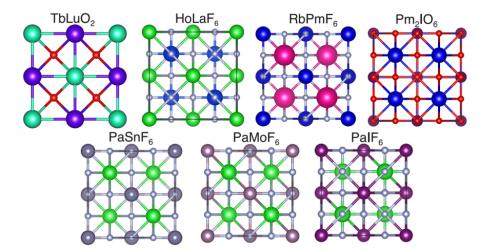Research News
Dr Qi Zhang Receives an NSF CAREER Award
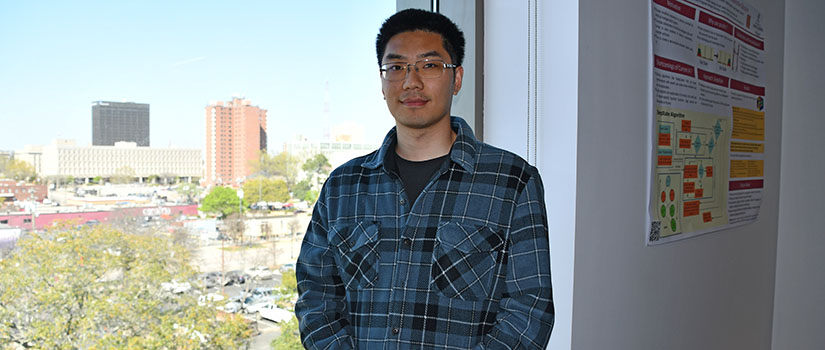 We are proud to announce that Dr Qi Zhang has been awarded an NSF CAREER Award for his project titled "Identifying and Exploiting Multi-Agent Symmetries". The project's abstract:
We are proud to announce that Dr Qi Zhang has been awarded an NSF CAREER Award for his project titled "Identifying and Exploiting Multi-Agent Symmetries". The project's abstract:
It is widely believed by scientists that our universe follows certain symmetry patterns and principles, which lead to profound implications such as conservation laws. Artificial intelligence (AI) can and has already benefited tremendously from exploiting these symmetries. This project seeks to identify and exploit symmetries that are prevalent in cooperative AI tasks, where a group of multiple autonomous sequential decision makers, or agents, plan and learn to maximize their combined benefit. As an example, consider the application of adaptive traffic signal control, where each intersection can be modeled as an agent controlling its traffic signal in a way that adapts to real-time traffic conditions to reduce congestion. There exist certain symmetries when the topology of the road network is regular, e.g., as a 4-connected grid, and the road condition is uniform. When done properly, such multi-agent symmetries can be identified and exploited to greatly improve the efficiency and effectiveness of the current solutions to cooperative AI. This project also integrates the proposed research into an array of education initiatives, playing key roles in the curriculum development and undergraduate research experiences at the PI's university, as well as outreach activities that bridge academia with industry practitioners and community stakeholders.
You can read more about his research in this article from USC news.
ChatGPT-like LLM-based-AIs Offer Both Opportunities and Risks for Society
ChatGPT has disrupted the narrative around AI and fired everyone’s imagination. Just like iPhone disrupted the market for mobile phones, Google did for search, Tesla did for cars, and Watson did for question-answering (with Jeopardy!), ChatGPT has people at every level of education spectrum trying it out for applications ranging from scientific articles to real-estate to law and business exams to programming, and much more. But technologies are not accepted by just its perfect performance but also a socio-technical ecosystem. For example, a car must drive properly but the legal, education, and standards framework allow a user to trust the enabling environment and confidently drive their vehicle on the roads. Similarly, conventional or new application domains alike, the adoption of chatbots were already hindered by the lack of a supportive socio-technical environment. With easy access of LLM-based tools like ChatGPT, the risk of harm will only increase unless other pillars are quickly built. To benefit society from the potential of LLM based technologies, the path forward is not to scuttle LLM-based tools but to increase investment and augment necessary other pillars for the technologies’ safe and trusted usage for the society.
Read the full article by Dr. Biplav Srivastava, or his online recording.
Undergraduate junior student Daniel Gleaves published his research on deep learning models for new materials discovery
 Our computer science junior student Daniel Gleaves from Prof. Jianjun Hu’s group published his research of deep learning algorithms for materials research in Digital Discovery Journal from Royal Society of Chemistry. In this work, he applied semi-supervised deep graph neural networks for material synthesizability and stability prediction. His models can achieve significantly better performance compared to the existing state-of-the-art PU learning methods with the true positive rate increased from 87.9% to 92.9% using 1/49 model parameters. His models can be combined with deep learning based generative material design models from Dr. Hu’s group for large-scale screening of novel functional materials. The accepted manuscript “Materials synthesizability and stability prediction using Semi-supervised teacher-student dual neural network” can be downloaded from here. Daniel was a recipient of USC Magellan Scholarship. Dr. Hu’s machine learning and evolution laboratory (MLEG) has involved dozens of undergraduate students in their cutting-edge research on AI for science and deep learning for materials discovery, which has already led to four journal publications in leading materials science journals. Interested highly motivated students can contact Dr. Hu by email.
Our computer science junior student Daniel Gleaves from Prof. Jianjun Hu’s group published his research of deep learning algorithms for materials research in Digital Discovery Journal from Royal Society of Chemistry. In this work, he applied semi-supervised deep graph neural networks for material synthesizability and stability prediction. His models can achieve significantly better performance compared to the existing state-of-the-art PU learning methods with the true positive rate increased from 87.9% to 92.9% using 1/49 model parameters. His models can be combined with deep learning based generative material design models from Dr. Hu’s group for large-scale screening of novel functional materials. The accepted manuscript “Materials synthesizability and stability prediction using Semi-supervised teacher-student dual neural network” can be downloaded from here. Daniel was a recipient of USC Magellan Scholarship. Dr. Hu’s machine learning and evolution laboratory (MLEG) has involved dozens of undergraduate students in their cutting-edge research on AI for science and deep learning for materials discovery, which has already led to four journal publications in leading materials science journals. Interested highly motivated students can contact Dr. Hu by email.
AIISC Event Posters and Photos
AIISC's 1st Retreat last Friday was hugely successful. Over 50 in attendance engaged in active discussions over 23 student posters representing a subset of the topics our ~40 researchers work on, attended the panel in which our collaborators shared their views on "AI in your research" and continued conversations over breakfast and lunch.
Please check out the posters and the photos of this vibrant event, and visit our LinkedIn page followed by over 8600 worldwide.
Accurate Human Silhouettes and Body Joints Estimation from Commodity 5G Millimeter-Wave Devices
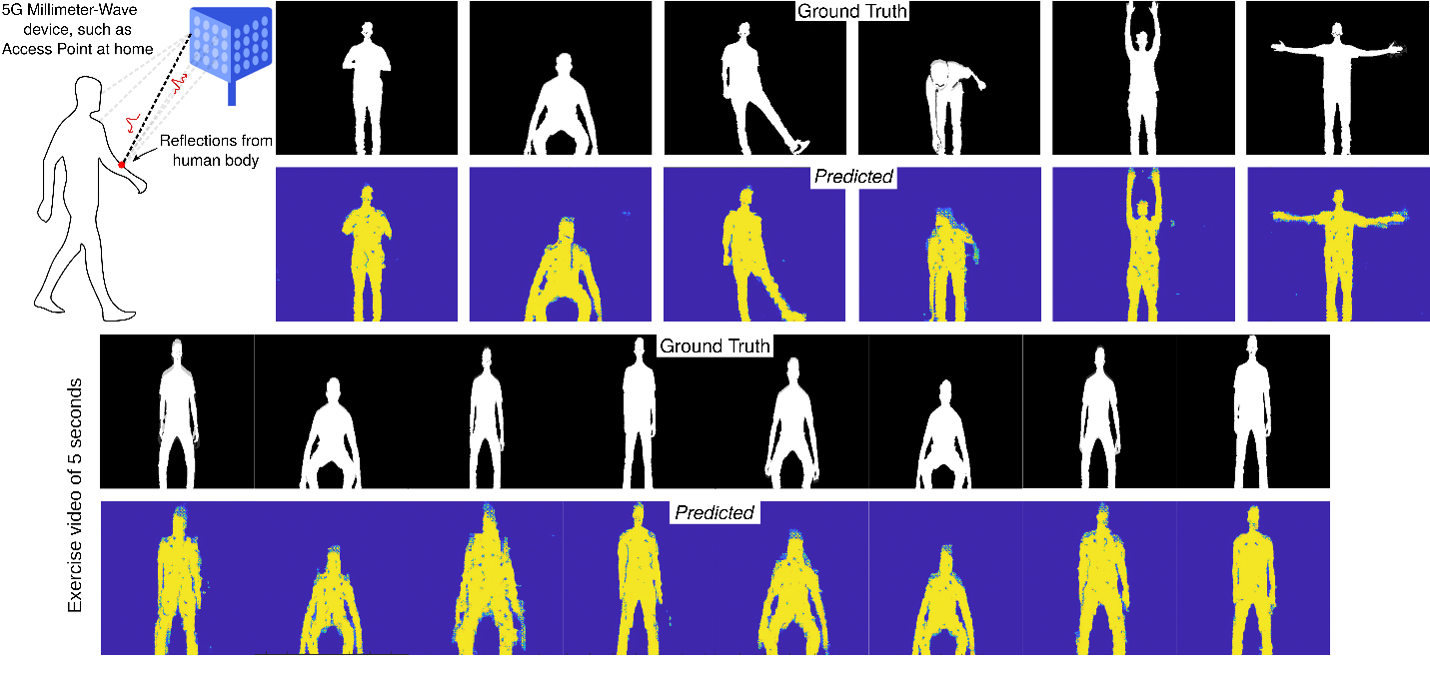
The need for understanding and perceiving at-home human activities and biomarkers is critical in numerous applications, such as monitoring the behavior of elderly patients in assisted living conditions, detecting falls, tracking the progression of degenerative diseases, such as Parkinson’s, or monitoring recovery of patients’ during post-surgery or post-stroke. Traditionally, optical cameras, IRs, LiDARs, etc., have been used to build such applications, but they depend on light or thermal energy radiating from the human body. So, they do not perform well in occlusion, low light, and dark conditions. More importantly, cameras impose a major privacy concern and are often undesirable for users to install inside their homes.
Now a team of researchers from the Systems Research on X laboratory at the University of South Carolina has designed a monitoring system, called MiShape, based on millimeter-wave (mmWave) wireless technology in 5G-and-beyond devices to track humans beyond-line-of-sight, see through obstructions, and monitor gait, posture, and sedentary behaviors. This system provides an advantage over camera-based solutions since it works even under no light conditions and preserves users’ privacy. By processing mmWave signals and combining them with custom-designed conditional Generative Adversarial Networks (GAN) model, they demonstrated that MiShape generates high-resolution silhouettes and accurate poses of human body on par with existing vision-based systems.
The findings are reported recently in the ACM Journal on Interactive, Mobile, Wearable and Ubiquitous Technologies (IMWUT) in a paper co-authored by UofSC graduate students, Aakriti Adhikari and Hem Regmi, and UofSC faculties of computer science and engineering department, Dr. Sanjib Sur and Dr. Srihari Nelakuditi. It was also recently presented at the highly selective international conference, ACM UbiComp 2022, by Aakriti Adhikari.
In their proposed approach, they first train a deep learning model based human silhouette generator model using mmWave reflection signals from a diverse set of volunteers performing different human poses, activities, etc., and then run the model to predict the silhouette of unknown subjects performing unknown poses, which are not part of the training process. The silhouette can then be used to generate a body skeleton, which can be tracked continuously, even under obstructions or low-light, for monitoring human activities automatically. Furthermore, the system can generalize to different subjects with little to no fine-tuning.
This research is an example of an emerging paradigm called Sensing for Well-being. It enables ubiquitous sensing techniques so that devices and objects become “truly smart” by understanding and interpreting the ambient conditions and activities with high precision, without relying on traditional vision sensors. “Through experimental observations and deep learning models, we extract intelligence from wireless signals, which, in turn, enable ubiquitous sensing modalities for various human activities and silhouette generation,” says Prof. Sur. The authors are also collaborating with researchers from the Arnold School of Public Health and doctors from the School of Medicine to bring these technologies to practice. Another application of this work is in monitoring human sleep quality and postures with ubiquitous networking devices, such as next-generation wireless routers at home. “We can use mmWave wireless signals to automatically classify, recognize, and log information about sleep posture throughout the night, which can provide insights to medical professionals and individuals in improving sleep quality and preventing negative health outcomes,” Sur says.
The research was supported by the National Science Foundation, under the grants CNS-1910853, MRI-2018966, and CAREER-2144505, and by the UofSC ASPIRE II award.
Helping people manage their diet using AI models

In recent years, people have become more aware of their dietary choices and the impact of food on health and chronic diseases. Revathy Venkataramanan, a computer science and engineering Ph.D. student, is using artificial intelligence (AI) techniques to develop nutritional analysis from food images and meal recommendations based on a user’s health conditions and food preferences.
Read the full article here.
Generative Discovery of New Semiconductors: Design without Understanding
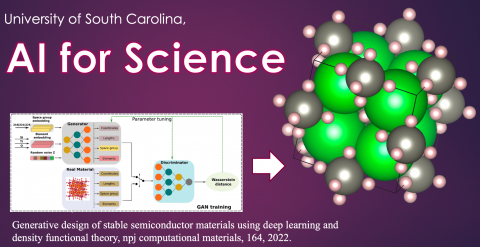 Discovery of novel materials with exceptional properties is fundamental to the technology progress to more efficient solar panels, longer-life batteries, and room-temperature superconductors. Traditionally, the discovery process is a highly ad hoc, empirical, serendipitous process based on inventors’ ingenuity and knowledge. To address this issue, materials scientists now mainly resort to the rational design process, in which they aim to obtain a mechanistic understanding of how materials composition and structures determine their function properties. However, the complexity of these relationships and the difficulty to enumerate all the delicate and intricate design rules makes it challenging to explore the vast chemical design space using such rational design approaches.
Discovery of novel materials with exceptional properties is fundamental to the technology progress to more efficient solar panels, longer-life batteries, and room-temperature superconductors. Traditionally, the discovery process is a highly ad hoc, empirical, serendipitous process based on inventors’ ingenuity and knowledge. To address this issue, materials scientists now mainly resort to the rational design process, in which they aim to obtain a mechanistic understanding of how materials composition and structures determine their function properties. However, the complexity of these relationships and the difficulty to enumerate all the delicate and intricate design rules makes it challenging to explore the vast chemical design space using such rational design approaches.
Now a team of researchers from the Machine Learning and Evolution Laboratory at the University of South Carolina applied a paradigm-shifting deep learning based generative design approach for computational discovery of novel semiconductors. By combining a generative adversarial networks (GAN) model, a metal classifier, and high-throughput first-principles calculations, they have discovered 12 novel stable AA’′MH6 semiconductors in the F-43m space group. They showed that AA′MnH6 and NaYRuH6 semiconductors have considerably different properties compared to the rest of the AA′MH6 semiconductors, which are all wide-bandgap materials and may be ideal for certain applications.
The findings are reported today in the journal Nature npj Computational Materials, in a paper by UofSC postdoc Edirisuriya M. Dilanga Siriwardane, graduate student Yong Zhao, and UofSC Professor of Computer Science Dr. Jianjun Hu (the corresponding author); Indika Perera at the University of Moratuwa.
In their generative design approach, they first train a deep neural network based crystal structure generator model using all known crystal materials deposited in the databases, and then they run these generators to create a large number of hypothetical materials, which are then fed to the metal classifier to filter out potential semiconductors. Then the top candidate structures are fed to the first principle simulation software Vasp for structure relaxation and stability check, and property calculation, which are very slow processes that used the High Performance Clusters (HPC) at the UofSc Research Computing facility.
This work is another success case for the emerging AI-for-Science paradigm conducted by the interdisciplinary team with the computational materials expertise from Dr. Siriwardane and deep learning and computing expertise from Dr. Zhao, Prof. Hu, and Prof. Perera. “Compared to rational design approaches, the deep learning based generative design approach has the special advantage in terms of its capability to efficiently navigate the almost infinite chemical design space of materials, assisted by the implicit, latent, dark knowledge learned by the neural network”, says Prof. Hu. Their new material design approach does not require explicit specification of design knowledge and rules (so, design without understanding), which is in sharp contrast to the traditional rational design methods.
“The deep learning generative models are very good at learning implicit chemical and materials composition knowledge”, says Dilanga, the paper’s lead author. “But the current algorithm can be further improved in terms of their success rates of generating stable structures”. Since the DFT quantum simulation is very slow, it is desirable to have a high hit-rate when they are used for validating the generated hypothetical materials. He adds, “our capability to discover more interesting materials is currently also limited by the computing power at UofSC”.
“Generating thermodynamically and structurally stable crystals structures is a non-trivial problem”, says Zhao, who led the development of the deep generative algorithm. He has recently introduced physical rules and geometric constraints to further improve the quality of the generated crystal structures.
For the discovered materials to become practical on the market or be adopted commercially, Hu says, “our hypothetical materials can guide experimental materials scientists to synthesize and characterize their properties”.
The research was supported by the National Science Foundation and used the HPC computing facility of UofSC.
Dr Sheth Ranked in Top Computer Scientists in the World
We would like to congratulate Dr. Amit Sheth. He was recently ranked by Research.com as one of the Top Computer Scientists in the world. More specifically, he was ranked:
- #80 in World
- #50 in the U.S.
with a 111 H-Index, 47,049 citations, and 581 publications.
For context, Amit was ranked close to notable Computer Scientists such as Turing Award winner Yan Lecun (#76, #46) and Co-Director of Stanford’s Human AI Institute Li Fei-Fei (#74, #45)
Congratulations to Amit for this well-deserved recognition. We are proud to have one of the world’s Top Computer Scientists in the CSE Department and leading the UofSC AI Institute.
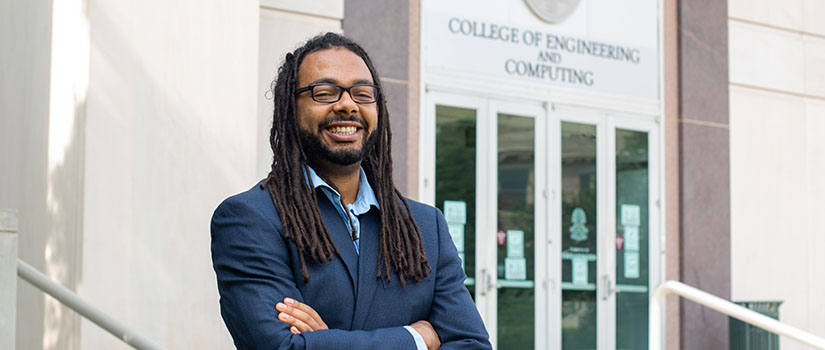 As artificial intelligence (AI) and machine learning continue to transform patient care, Computer Science and Engineering Assistant Professor
As artificial intelligence (AI) and machine learning continue to transform patient care, Computer Science and Engineering Assistant Professor 